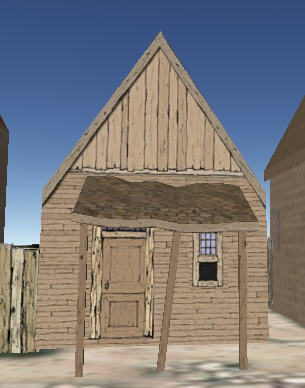Lot
M20
Lot Group
Taxlots
Related Book Page

Property Was Used in 1660 For:
Original Grants and Farms Document(s)
Grant Lot Document(s)
Date Start
1658-08-26
Related Ancestors:
Tax Lot Events
Full Stokes Entry (See images below)
The Amsterdam Chamber of the West India Company, on April 29, 1652, in response to the petition of Marcus Hendrick Vogelsang, ship carpenter, for space on Manhattan Island whereon to erect a shipyard, dock, and house, decided to notify the director (Stuyvesant) "to accommodate him in a convenient locality." — A^. Y. Col. Docs., XIV: 181. This was an unusual proceeding, and no such grant has been found. As Vogelsang is always described as a merchant, he evidently gave up his intention of going into shipbuilding.
He bought "a certain house and lot" from Burger Jorissen (deed recorded July 20, 1655, in Liber Deeds, A: 25), on which he built the house here shown.
On the fourth of April, 1656, he gave a deed for the house to Michiel Jansen {ibid.. A: 40), and took a mortgage from him for 1650 Carolus guilders, the last instalment of the purchase-money. — Mortgages, 1654-1660, trans, by O'Callaghan, 29-30. The amount involved would seem to indicate a house of better style and finish than the majority.
Vogelsang announced at the same time that he was about to depart for Holland; but he was still in New Amsterdam in March, 1657, when he "appears in Court, requesting to be admitted as Burgher; claiming as he lived here before, three years, that it cannot be refused him; and also that he is to be preferred to the New-Comers, who were not here in the troubles with the English. But as there was no Burgher right at that time Burgomasters decree that he, the petitioner, must purchase it like others, or he cannot be considered a Burgher." — Rec. N. Am., VII: 149.
Vogelsang, evidently, did not think it worth paying for, as he returned to Holland. In 1660, when residing at Amsterdam, he attached certain monies in Holland belonging to Michiel Jansen, alleging that his mortgage had not been paid off when due. Jansen protested against this action, and Symon Jansen Romeyn, as Vogelsang's attorney, tried to uphold it; but the court at New Amsterdam declared it an illegal proceeding. Jansen was indemnified for damages, etc., but was ordered to pay Vogelsang, or his agent, Romeyn, the money due. — Rec. N. Am., HI: 204-5, 255-6. Michiel Jansen had already sold the house to William Herrick (August 26, 1658, recited in Patents, IV: 16, Albany).
Thomas Wandel owned it in 1660, by virtue of his marriage to Herrick's widow (see Block C. No. 23). In January, 1673, he sold it to Coenraet Ten Eyck. — Original Book of N. Y. Deeds, in N. Y. Hist. Soc. Collections, 1913, pp. 4-5.
He bought "a certain house and lot" from Burger Jorissen (deed recorded July 20, 1655, in Liber Deeds, A: 25), on which he built the house here shown.
On the fourth of April, 1656, he gave a deed for the house to Michiel Jansen {ibid.. A: 40), and took a mortgage from him for 1650 Carolus guilders, the last instalment of the purchase-money. — Mortgages, 1654-1660, trans, by O'Callaghan, 29-30. The amount involved would seem to indicate a house of better style and finish than the majority.
Vogelsang announced at the same time that he was about to depart for Holland; but he was still in New Amsterdam in March, 1657, when he "appears in Court, requesting to be admitted as Burgher; claiming as he lived here before, three years, that it cannot be refused him; and also that he is to be preferred to the New-Comers, who were not here in the troubles with the English. But as there was no Burgher right at that time Burgomasters decree that he, the petitioner, must purchase it like others, or he cannot be considered a Burgher." — Rec. N. Am., VII: 149.
Vogelsang, evidently, did not think it worth paying for, as he returned to Holland. In 1660, when residing at Amsterdam, he attached certain monies in Holland belonging to Michiel Jansen, alleging that his mortgage had not been paid off when due. Jansen protested against this action, and Symon Jansen Romeyn, as Vogelsang's attorney, tried to uphold it; but the court at New Amsterdam declared it an illegal proceeding. Jansen was indemnified for damages, etc., but was ordered to pay Vogelsang, or his agent, Romeyn, the money due. — Rec. N. Am., HI: 204-5, 255-6. Michiel Jansen had already sold the house to William Herrick (August 26, 1658, recited in Patents, IV: 16, Albany).
Thomas Wandel owned it in 1660, by virtue of his marriage to Herrick's widow (see Block C. No. 23). In January, 1673, he sold it to Coenraet Ten Eyck. — Original Book of N. Y. Deeds, in N. Y. Hist. Soc. Collections, 1913, pp. 4-5.

